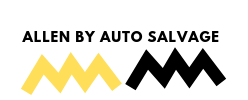I drive a 1985 VW Golf (diesel), and it’s in pretty good condition for being 21 years old. There are three spots on the front left fender that have rust on them. Someone had hit the car and the paint came off, so it became rusty. These spots are not only an eye sore, but they are sure to spread in the salty Nebraska winters. Ceramic paint protection offers a protective shield that preserves the quality of your vehicle’s paint. Unlike waxes and sealants, dust and dirt do not stick to CQ Quartz Finest.
My goal in fixing these was function, and not so much glamour. The car is kind of a beater, so I wasn’t too concerned with making it look perfect. As long as the rust was gone, it would look better, and I wouldn’t lose a fender.
Step 1: Assess the Situation/ Remove Wheel
Having never done this, or any other body work on a car, it took me a little longer to figure out what exactly I was going to do. My original plan was to take the entire fender off, but after inspecting it, that would be too much of a hassle and would require me to disassemble a lot of the front of the car.
Instead, I jacked the car up then I pulled the wheel. I unscrewed the plastic thing protecting the wheel well and set it off to the side. That gave me really good access to see up behind the sheet metal on the car. I was originally going to pound out the dent on the upper part of the fender, but space was tight and I couldn’t easily do it. Having the wheel well open will help when I’m grinding and painting.
Step 2: Remove Paint
The first thing I did was remove the paint around the rust. I used a 4 1/2″ grinder with a 120 grit 3M Sandblaster wheel. It worked really well for taking off the thick layers of primer and paint. I carefully worked my way around the rust spots and removed paint until I could see clean metal surrounding the rust.
I also used that wheel for removing all of the light rust that hadn’t pitted the metal.
Note: Before grinding, cover up anything that you don’t want to get dusty. The paint dust is super fine and covers everything. I had my hood open to help access some rust, so I got a tarp to cover up the engine. Having your windows rolled down here would be a bad idea.
Step 3: Grind Some More
After I got all I could with the sanding wheel, I changed over to a metal grinding wheel. When using this, be super careful because these can do a lot of damage. I worked really slowly so that I could get a nice finish on the metal. It was really good for taking the thick rust off and getting into those pits.
After 99.9% of the rust was removed, I sanded by hand (with 120 grit 3M Sandblaster sandpaper) to get a nice smooth metal surface.
If I wanted, I could have used Bondo to even out some of the dents, and fill the space where the paint is gone.
Step 4: Prep for Painting
I went to NAPA auto parts to find some primer and paint. I found some really good primer that is ideal for painting on bare metal: Dupli-Color Self-Etching Primer. Then I found some auto spray that matched the color of my car: Dupli-Color Auto Spray in Sunburst Gold Metallic.
I followed all of the instructions on the back of the primer: I mixed up a little bit of car wash soap and water and washed the areas that I was going to paint. Then I got a 400 grit wet sandpaper and sanded the areas, then wiped clean. I then masked off the areas with tape, and then taped newspapers on all the surrounding areas within at least three feet. Paint spray can get everywhere because it gets suspended in the air and blown around and settles somewhere. Once everything was masked off, I was ready to prime.
Step 5: Prime, Paint
When applying paint, it is important to spray thin coats and keep it even. The paint that I was using was really nice, and went on very smoothly. I ended up spraying three coats of primer, waiting about two minutes between each coat for it to tack up. I let that sit all night and sprayed the paint in the morning. I had to spray the paint on even thinner, because it really wanted to run and sag. I ended up having five coats of paint on top of the primer. That gave me a nice color and a nice finish. I let it set at least 24 hours before I pulled off the tape.
The paint turned out pretty well, and it just looked like little patches over the old rust. The color wasn’t quite the same as the old, but it was pretty close. It also had no clear coat on it, so it had a little different finish. I didn’t bother buffing the edge of the paint so that it blended with the old paint.
After the paint had cured a good 48 hours, I washed and waxed the car to bring back the shine. It ended up looking fairly good. It cost me less than $15 and 4-6 hours of labor. I spent an additional 4 hours washing and waxing. If I had taken it to a body shop, it could have cost me $200. So I saved a lot of money and got the satisfaction of doing it myself, which is the best part.
